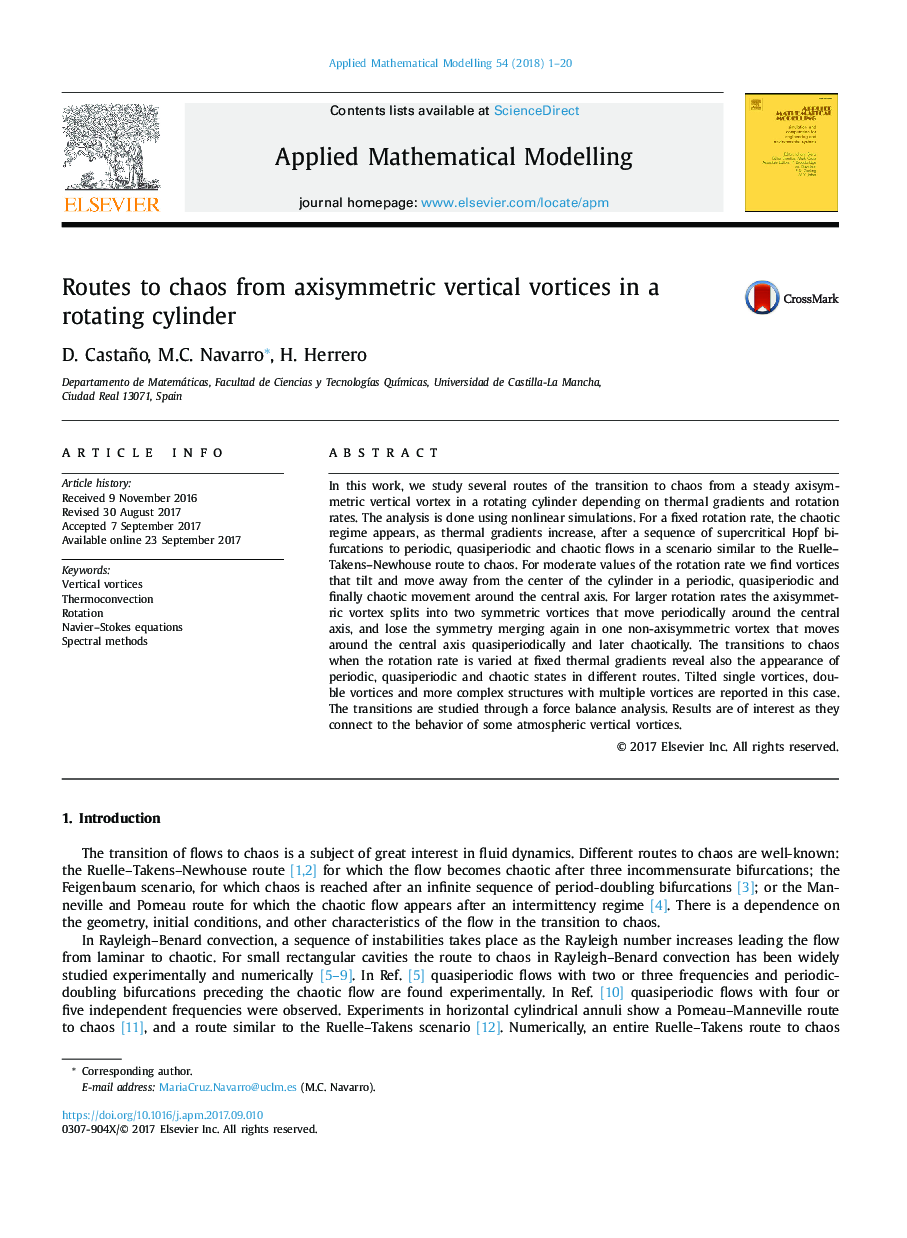| Article ID | Journal | Published Year | Pages | File Type |
|---|---|---|---|---|
| 5470760 | Applied Mathematical Modelling | 2018 | 20 Pages |
Abstract
In this work, we study several routes of the transition to chaos from a steady axisymmetric vertical vortex in a rotating cylinder depending on thermal gradients and rotation rates. The analysis is done using nonlinear simulations. For a fixed rotation rate, the chaotic regime appears, as thermal gradients increase, after a sequence of supercritical Hopf bifurcations to periodic, quasiperiodic and chaotic flows in a scenario similar to the Ruelle-Takens-Newhouse route to chaos. For moderate values of the rotation rate we find vortices that tilt and move away from the center of the cylinder in a periodic, quasiperiodic and finally chaotic movement around the central axis. For larger rotation rates the axisymmetric vortex splits into two symmetric vortices that move periodically around the central axis, and lose the symmetry merging again in one non-axisymmetric vortex that moves around the central axis quasiperiodically and later chaotically. The transitions to chaos when the rotation rate is varied at fixed thermal gradients reveal also the appearance of periodic, quasiperiodic and chaotic states in different routes. Tilted single vortices, double vortices and more complex structures with multiple vortices are reported in this case. The transitions are studied through a force balance analysis. Results are of interest as they connect to the behavior of some atmospheric vertical vortices.
Related Topics
Physical Sciences and Engineering
Engineering
Computational Mechanics
Authors
D. Castaño, M.C. Navarro, H. Herrero,
